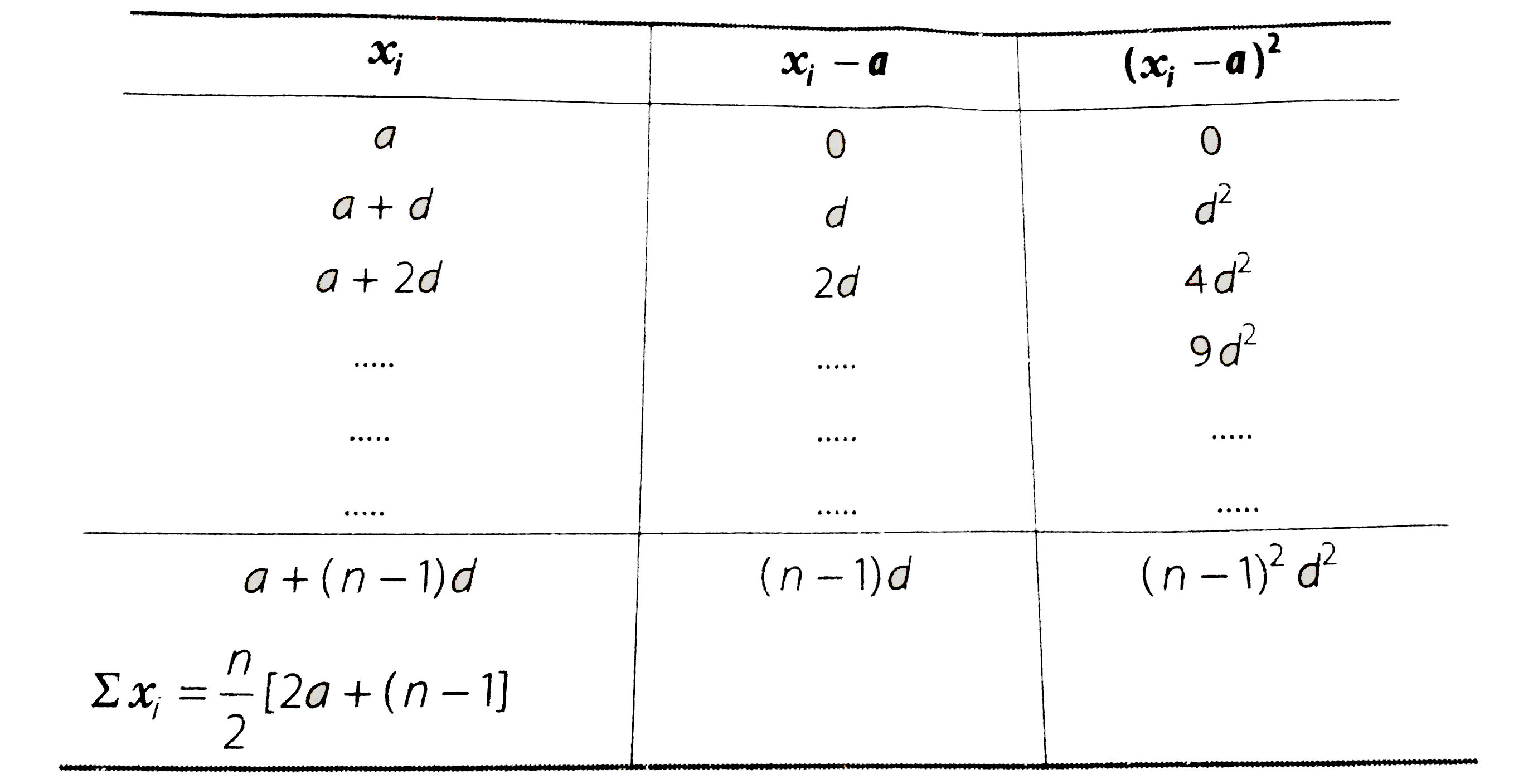Sum of first n terms of an A.P. whose last term is
l and common difference is d, is
The correct Answer is:n2[2a+(n−1)d]
Step by step video, text & image solution for Sum of first n terms of an A.P. whose last term is l and common difference is d, is by Maths experts to help you in doubts & scoring excellent marks in Class 11 exams.
Topper's Solved these Questions
- BOOK - MODERN PUBLICATIONCHAPTER - SEQUENCES AND SERIESEXERCISE - COMPETITION FILE21videos
SEQUENCES AND SERIES
- BOOK - MODERN PUBLICATIONCHAPTER - SEQUENCES AND SERIESEXERCISE - CHAPTER TEST12videos
SEQUENCES AND SERIES
- BOOK - MODERN PUBLICATIONCHAPTER - SEQUENCES AND SERIESEXERCISE - REVESION EXERCISE43videos
SEQUENCES AND SERIES
- BOOK - MODERN PUBLICATIONCHAPTER - RELATIONS AND FUNCTIONSEXERCISE - Chapter Test11videos
RELATIONS AND FUNCTIONS
- BOOK - MODERN PUBLICATIONCHAPTER - SETS EXERCISE - CHAPTER TEST 112videos
SETS
Similar Questions
Determine mean and standard deviation of first n terms of an AP whose first term is a and common difference is d.
 View Solution
View SolutionThe sum of the first n terms of an AP whose first term is 8 and the common difference is 20, is equal to the sum of first 2n terms of another AP whose first terms is -30 and the common difference is 8. find n
View Solution
Knowledge Check
- Question 1 - Select One
A sequence is called an A.P. if the difference of a term and the previous term is always same i.e. if an+1−an = constant (common difference) for all n∈N.
For an A.P. whose first term is 'a' and common difference is 'd' has its nth term as tn=a+(n−1)d Sum of n terms of an A.P. whose first is a, last term is I and common difference is d is
Sn=n2(2a+(n−1)d)
=n2(a+a+(n−1)d)=n2(a+l).
Sr denotes the sum of first r terms of a G.P., then Sn,S2n−Sn,S3n−S2n are inAA.P.BG.P.CH.P.Dnone of these - Question 2 - Select One
A sequence is called an A.P. if the difference of a term and the previous term is always same i.e. if an+1−an = constant (common difference) for all n∈N.
For an A.P. whose first term is 'a' and common difference is 'd' has its nth term as tn=a+(n−1)d Sum of n terms of an A.P. whose first is a, last term is I and common difference is d is
Sn=n2(2a+(n−1)d)
=n2(a+a+(n−1)d)=n2(a+l).
If a1,a2,............,an are in G.P. then loga1a,loga2a,loga3a,...logan a are inAG.P.BA.P.CH.P.Dnone of these - Question 3 - Select One
Find the sum of the first 22 terms of an AP whose first term is 4 and the common difference is 43.
A396B390C456D100
The sum of the first n terms of an AP whose first term is 8 and the common difference is 20 is equal to the sum of first 2n terms of another AP whose first term is −30 and the common difference is 8. Find n.
View SolutionFind first four terms of an A.P., whose first term is −6 and common difference is +6.
View SolutionFind the first four terms of an A.P. whose first term is −3 and common difference −4, and also find tn.
View SolutionThe sum of 40 terms of an AP whose first term is 2 and common difference is 4, will be
View SolutionThe first four terms of an A.P. whose first term is −2 and the common difference is −2 are
View Solution

